The Unsung Volvo 164
A Former Owner Talks About His Restoration of This Swedish Sedan…and Laments the Fact That There Aren’t More of Them Around.
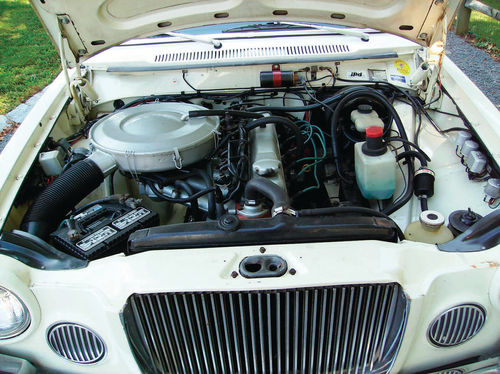
Some cars pass into history without much fanfare or farewells, and one such car was the Volvo 164. It was introduced to the world market in 1969 and 155,068 were built over seven years through the 1975 model, but most were sold in Scandinavia, Europe and other parts of the world. The present U.S. obscurity of this superb automobile is unfortunate and undeserved, in my opinion. Volvos historically have been driven into the ground by their first owners, which explains why there are few low-mile examples and barn finds around but I still have trouble accounting for the relatively few examples of fully restored 164s found today. The quality, safety, and performance of this top-ofthe-line Volvo are head and shoulders over many lower-quality cars from the same era that are popular today as collector cars.
A Swedish Car With a Brooklyn Background
The chief designer for Volvo from 1950 to 1990 was Jan Wilsgaard who created Volvo automobiles from the 122 to the 850. Born in Brooklyn, New York, he studied at the School of Applied Arts in Gothenburg, Sweden and joined Volvo as design chief when he was only 20. In the mid 1960s, Wilsgaard was asked to design a luxury version of the practical but conservative 144, to make use of a new six-cylinder engine. Ready for the 1969 model year, this flagship came to the U.S. with leather seating, wool carpets, and a smooth 3-liter inline six.
An Understated Look… Except for That Grille
Cosmetically, the 164 is understated. The styling is almost entirely based on practicality and safety, not glamour. The one exception may be the grille opening. I believe that designer Wilsgaard was making a statement like “look here; there is something different behind this grille.” Some models of 2XX Volvos carried a less exaggerated version of this shape which became a Volvo hallmark from 1976 to 1993. Some recent Chryslers have revisited this design making it common today. In any case, it is striking. It caught my attention in 1975 when my wife and I bought our first Volvo, a 1969 164. Having owned only domestic and British cars up to that point, I was stunned by the obvious quality of the 164. It was evident everywhere in the car, in the driver controls, in the fit and finish, in the comfort and handling, even in the wiring. This car said “Drive me, my friend; I am on your side.”
Editor’s note: Regular readers will recognize Carl Bauske as a Volvo fan from his articles regarding “Buster,” his 1986 Volvo 245 wagon. With this, he may convince more of us to become followers of the Swedish marque as well. And if you already consider yourself to be part of the Volvo family, why not take this opportunity to tell us about your favorite Scandinavian automobile.
Safety Has Been a Volvo Watchword For Decades
Front and rear crumple zones were designed into the car’s unibody. Power steering and four-wheel power disc brakes were standard. I was familiar with dual circuit brake systems from Ramblers that I had owned, but on this Volvo, engineered to the next level, failure of any brake hydraulic line left the driver with 80% braking ability from both front wheels and one rear wheel. A collapsible steering column, head rests and threepoint shoulder harnesses for the front seat were Volvo nods to safety. Also standard was electric rear window defogging, and two-speed electric wipers.
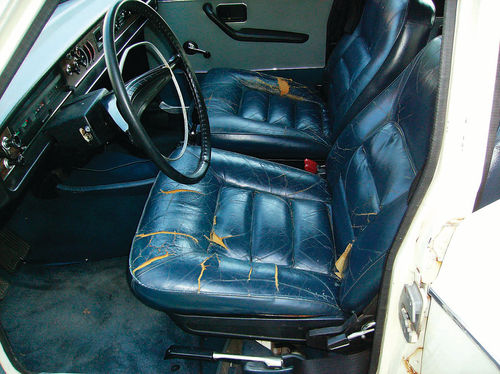
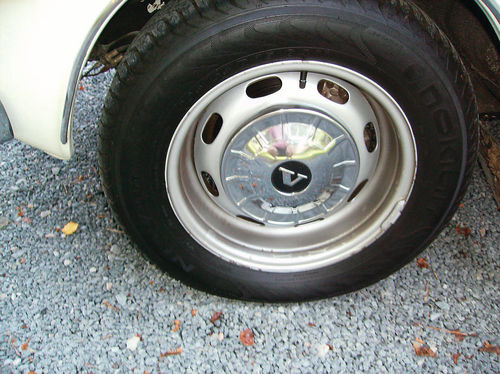

The 164 was only available as a 4-door sedan, so 2-door and station wagon Volvos were only available with 4 cylinders. There were very few options, but a choice of a 3-speed Borg Warner type 35 automatic or four-speed manual was available. Volvo used manual transmissions of their own manufacture for four-cylinder models but to handle the torque from the six, they sourced a very strong unit from ZF. In the U.S., this four-speed normally carried a Laycock de Normanville electric overdrive, turning it into a 5-speed, with overdrive available in 4th gear. Overdrive could be selected just by flipping a control handle on the steering column. There was no operation of the clutch required going into or out of overdrive gear.
The rear solid axle was coil sprung with upper torque rods and lower control arms positioning it. Final drive ratios were 3.31 for the automatic, 3.54 for the 4-speed, and 3.73 for the overdrive. A rear speaker for the radio, a limited slip differential, and air conditioning were also options.
There was nearly unobstructed vision all around, and occupants enjoyed possibly the most comfortable seats ever put into an auto. Besides fore and aft adjustment, and infinite rake of the seat squab, the whole driver’s seat could be easily adjusted for height while occupied. The heat and ventilation provide individual controls for floor and defrost, and tunnels carried warm air to the back seat floors. Air was collected from a high-pressure area in the cowl but a two-speed fan was there to help. Adjustable left and right foot well vents helped to keep the occupants cool. The 164 carried wing vent windows until 1974.
Compared to the 144 model, accommodation of the longer six meant an increase in the overall length (+2.9 inches) and a longer wheel base (+4.9 inches). Otherwise the 144 and 164 used the same dimensions in the passenger compartment and trunk. Additional stainless trim strips were added to the wheel arches and along the sills.
B30 Engine
The B30 was a logical extension of the B20 4-cylinder. It utilized many of the same components, such as pistons, rods and valves. Like the B20, the B30 was used in many different applications. Besides the 164 automobile, it was used in Volvo Penta marine drives and in military vehicles such as the C303, all the way until 1984.
The B30 was a rugged engine with a 6000 rpm redline and peak horsepower at 5500. The torque curve was extremely flat with over 150 ft. lb. available from 1500 to 4900 rpm. Piston displacement was 2978 cc (182 cu in). Engine output is very difficult to pin down, but the best records seem to be from the 164 club in Sweden. As different emission requirements were placed on U.S.-bound cars, the output varied from a minimum 125 hp for the 1975 California catalyst cars to a maximum of 160 hp for a 1972 fuel-injected B30E. European ratings were higher with a maximum of 175 hp and 177 ft. lb of torque. Marine engines were rated at 170 hp with triple downdraft carbs. The compression ratio was altered in different markets by varying the thickness of the head gaskets. All B30 engines required premium fuel.
Specifications
General
Front-engine, rear-drive, four door sedan
Engine
Type ...................................................................B30E OHV, 7 main bearing, inline 6 cyl.
Displacement ......................................................................................2978 cc (182 cu. in.)
Bore and stroke ..........................................................88.9 mm X 80 mm (3.5 X 3.15 in.)
Compression ratio ...........................................................................................................10:1
Fuel System ....................................................................... Bosch D-Jetronic fuel injection
Lubrication .................................................. 5.2 liters, gear pump, full flow spin-on filter
Power ..................................................................................................... 175 hp @ 5500 rpm
Torque ............................................................................................. 177 ft.-lbs. @ 2500 rpm
Lifters ............................................................................................. Solid, adjustable rocker
Drivetrain
Transmission ........................................................................ M410 4-speed with overdrive
Final drive ratio ............................................................................................................ 3.73
Suspension and Brakes
Steering ...................................................................... ZF power-assisted recirculating ball
Front ....................................................................................... Independent, double A arm
Rear .......................... Coil springs, upper torque rods/lower control arms, panhard bar
Brakes ....... Disc/disc, vacuum assist tandem master cylinder, rear anti-lock regulators
Measurements
Wheel base ............................................................................................................... 106.3 in.
Track ........................................................................................................................... 53.1 in.
Length ....................................................................................................................... 185.6 in.
Width ........................................................................................................................... 67.7 in.
Height ......................................................................................................................... 56.7 in.
Weight ...................................................................................................................... 2920 lbs.
Tire size ...................................................................................................... 175 HR 15 radial
The Featured 164
I have often named my cars, and Sleepy got his name from the notion that he had been somewhere asleep for most of his life. When I bought the California White (paint code 42) 1969 automatic in 1999 through an ad in Rolling, the Volvo Club magazine, he had less than 70,000 miles which is very low for a 30-year-old Volvo! He was driven to my home in New Jersey from Long Island, New York, by the owner. He came with service records showing me to be the third owner. His original B30A was rated 145 hp and 163 ft.-lb. torque from dual side draft 1.75-inch Zenith-Stromberg carbs.
The Mystery of the Broken Compression Rings
He was in good original condition, was complete, but was very hard to start which I had been warned about. There was also excessive blow-by from the engine resulting in oil being found throughout the PCV system. I had owned many Volvos and I had never seen this problem with their engines.
I ran a compression test and only one cylinder had proper compression. Well, since Volvos of this vintage are extremely easy to work on, I pulled the head, and found that nothing was wrong with the valves. The cylinders in the cast iron block looked great with no ledge, scores, or blemishes. You could see the original hone pattern from the factory. The pistons had to be leaking for some reason, so it was time to pull the engine. As I removed the pistons, I found the problem: Every top compression ring except one was broken into two pieces.
Why all the broken rings? Sleepy had spent a lot of time from 1969 to 1999 not driving. I believe that a doting owner perhaps filled the cylinders with oil so they would not rust while the car was sleeping. While attempting to start the car, the rings and ring lands gave way to extreme compression due to oil still in the cylinders. The pistons, which looked perfect, were unusable as the top ring land was now too wide. In an otherwise near-perfect engine, I can think of no other explanation. I think collectors should not do this. It is not necessary and can destroy an engine. If you have done this, remove the spark plugs before turning the engine over by hand. If oil comes out the plug holes, suck it all out before re-installing the plugs.
Two More Volvos Enter the Picture
At this point I bought two extra 1973 164s from a lady in New Hampshire. These cars each had high mileage and were so rusted that they could not be saved. One was named Morgan and one was Betsy. Betsy ran great and Morgan had a nice interior but had not run for a long time. However, both of these cars had the 160 hp fuel-injected B30E engine and each had a 4-speed/overdrive. I parted out Morgan and drove Betsy while I upgraded Sleepy.
I built a B30E engine to European specs using Sleepy’s original block and crank as neither needed any machine work. I used the pistons and rods from Morgan along with his fuel-injection cylinder head fitted with hardened seats for unleaded fuel. I used a 10:1 compression configuration. All the parts from Morgan were cleaned, polished and either powder coated or painted. I painted the engine compartment too.
I bought a performance camshaft from a fellow in the 164 club in Sweden. It was new from Volvo but was unmarked. I was told it was a custom cam made for a special high-output marine engine but never used. I converted Sleepy to utilize the 4-speed stick shift and the 3.73:1 rear axle from Morgan as well. Because Sleepy was automatic, he had a 3.31:1 axle, too tall for the overdrive.
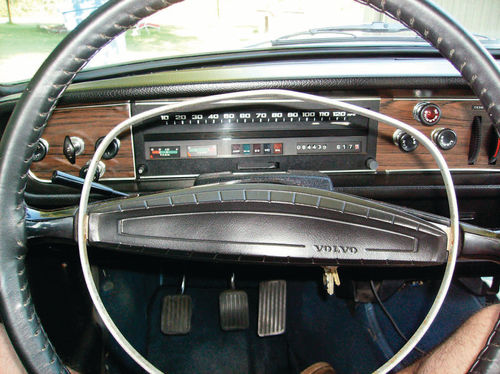

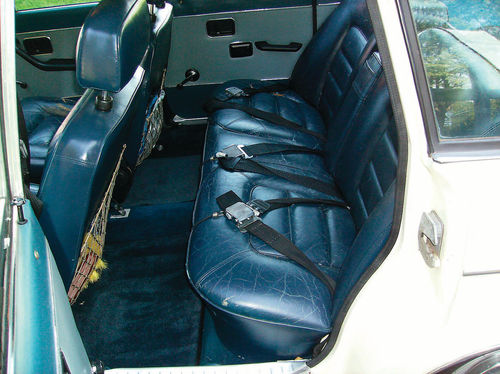
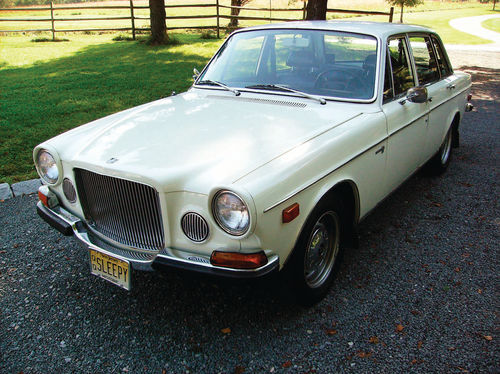
The Bosch D-Jetronic fuel injection system was used by several European makes, like VW and Mercedes-Benz. It is not too complicated if you do a little studying up on how it works. The analog type computer monitors the intake manifold pressure (D is for druck, the German word for pressure) along with other conditions such as coolant and air temperatures and calculates each pulse length used to open the electric injectors. The injectors are fired three at a time triggered by contact points in the bottom of the distributor. When operating properly this system provides fast starts, a smooth idle and excellent performance and efficiency.
I was able to use all the FI components from Morgan without robbing Betsy. This was remarkable given the ghastly condition of Morgan. I cleaned up the components and the FI wiring harness using shrink tubing and cable dressing. When all the cleaning and dressing was finished, I laid the whole system out on the garage floor, connected it to a battery and a fuel supply and made sure it was all working before installing it in the car. By spinning the distributor, I could cause the six injectors to fire gas into jars. Attention to detail was critical but I was rewarded by the completed engine firing right up in the car. I replaced the exhaust with an entirely new and proper system for a fuelinjected model.
A Mover With Excellent Handling
The result was successful and beyond. Sleepy woke up. The mystery camshaft proved to be a source of good torque and power. A 164 with a stick shift and the B30E can reach 60 mph in 8.7 seconds. That’s certainly not blazing, but very quick for a Volvo of this era.
But power is not a 164’s strongest point…it is the whole package. To drive this car on a twisty mountain road is pure joy. Initial understeer gives way to gentle oversteer, and the car can be tossed, even on poor surfaces such as loose gravel, with the greatest confidence. The tough M410 gearbox can be speed shifted from gear to gear, up or down, without protest.
On the downside, the car is not as quiet in the cabin as what most drivers expect from a luxury car. Furthermore, only in the last years of production did the 164 get standard A/C and front seat power windows.
I drove Sleepy for almost 10 years and during that time I ended up robbing Betsy of some critical fuel injection components. But I had saved the original carburetors from Sleepy and installed those in Betsy. She lived off-road as a farm vehicle used for hauling stone, firewood and tools. I have to confess that my friend Bill and I used her to cut wild roses too, by mounting a huge saw blade on the front. We also used her as our own personal rally cross fun car in the back pasture.
If Only There Were More of Them Around
Sadly, by 2009 life’s vagaries overcame my strong attachment to Sleepy and I sold him to a fellow enthusiast who had been looking for a 164 for some time. Betsy, who still ran, went along as a parts car. Her engine and transmission were excellent in spite of over 200,000 miles.
With all said and done, I wish I could buy a brand-new Volvo 144 or 164. They were very much to my liking, being simple, rugged, comfortable and most of all, lovable, even though their owners were told to “Drive it like you hate it,” a slogan used by Volvo ads during the 1960s. Unfortunately, most of them followed that advice.
















